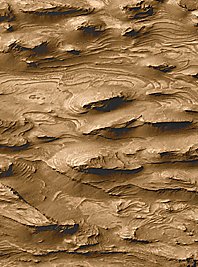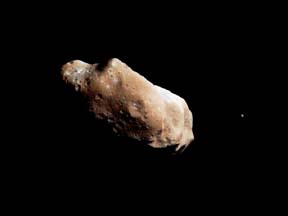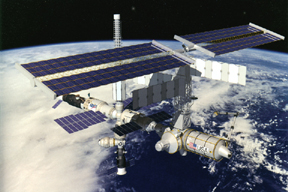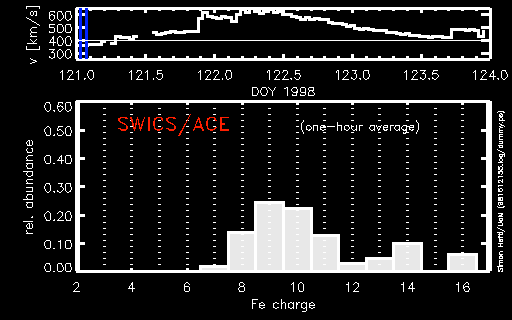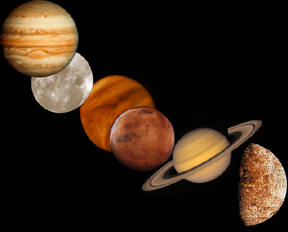Click on image for full size
NASA/JPL/Malin Space Science Systems
Related links:
Exciting News from the Red Planet!
News story originally written on December 19, 2000
The Mars Global Surveyor
(MGS) was launched on November 7, 1996. It has been in orbit around
Mars for over 1500 days. It may have made its greatest observation this
month!Pictures taken by the camera aboard the MGS show layers of sedimentary rocks that could be evidence of past lakes and seas on Mars. As on Earth, sedimentary rocks hold the history of the planet.
Right now, we think of Mars as just a bunch of dry rocks. But, "these images tell us that early Mars was very dynamic and may have been a lot more like Earth than many of us had been thinking," says Malin. Malin is one of the principal investigators of the MGS program. He added, "I have not previously been a vocal advocate of the theory that Mars was wet and warm in its early history. But my earlier view of Mars was really shaken when I saw our first high- resolution pictures of Candor Chasma. The nearly identically thick layers would be almost impossible to create without water."
But, these observations are only one piece in a very big puzzle. Some scientists think that the layers within these sedimentary rock formations are so prominent because Mars was actually a lot colder and drier 3.5 billion years ago, allowing for more dust to be airborne and thicker layers to be formed.
It may seem confusing that some scientists take these observations as
confirmation of a wetter, warmer Mars, while others think exactly the
opposite thinking of a colder, drier Mars. This is the wonder of the
field of science. Only with further investigation, discussion, and
missions to the Martian surface will
we know for sure what these awesome surface features tell us about the
history of the Red Planet.


